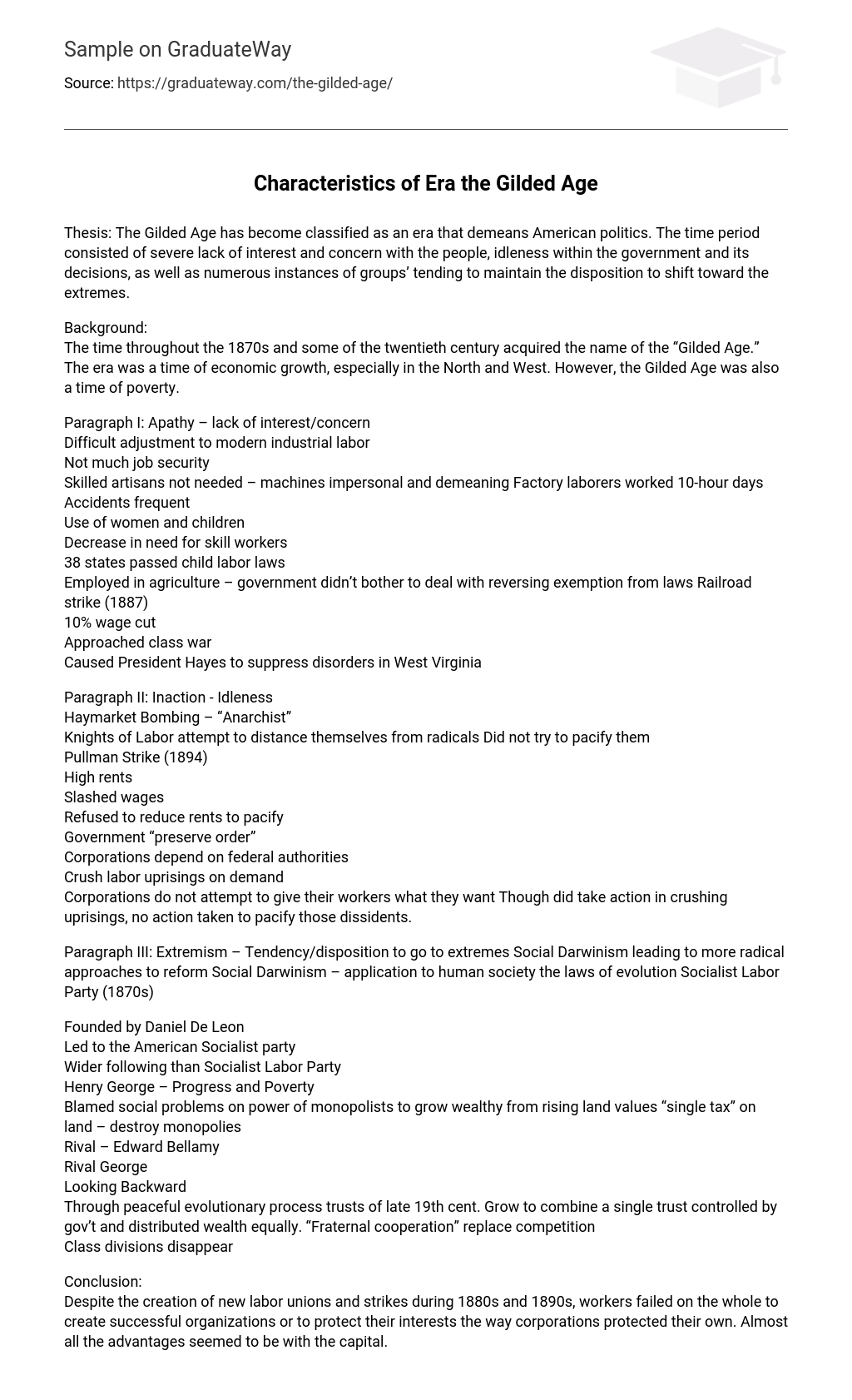Thesis: The Gilded Age is seen as a period that devalues American politics. It was characterized by a strong indifference and apathy towards the people, inaction within the government and its choices, and frequent cases of groups leaning towards extreme positions.
Background:
In the late 1800s and early 1900s, a period called the “Gilded Age” experienced notable economic growth, especially in the Northern and Western areas. However, it was also marked by extensive poverty.
Paragraph I: Apathy – lack of interest/concern
Difficult adjustment to modern industrial labor
Not much job security
Skilled artisans not needed – machines impersonal and demeaning Factory laborers worked 10-hour days
Accidents frequent
Use of women and children
Decrease in need for skill workers
38 states passed child labor laws
Employed in agriculture – government didn’t bother to deal with reversing exemption from laws Railroad strike (1887)
10% wage cut
Approached class war
Caused President Hayes to suppress disorders in West Virginia
Paragraph II: Inaction – Idleness
Haymarket Bombing – “Anarchist”
Knights of Labor dissociate themselves from radicals, but do not attempt to pacify them.
Pullman Strike (1894)
High rents
Slashed wages
Refused to reduce rents to pacify the workers.
Government tries to “preserve order.”
Corporations rely on federal authorities
Crush labor uprisings when required by corporations.
Corporations neglect the desires of their workers and take no action to appease the dissidents.
Paragraph III: Extremism, characterized by a tendency to go to extremes, is exemplified in Social Darwinism. This theory incorporates the principles of evolution into human society and results in more extreme methods of bringing about change. A notable illustration of this phenomenon is the Socialist Labor Party during the 1870s.
Founded by Daniel De Leon, the American Socialist Party emerged as a result of a movement that had a broader following than the Socialist Labor Party. One influential figure in this movement was Henry George, who published “Progress and Poverty” and argued that social problems were caused by monopolists profiting from increasing land values. George proposed implementing a “single tax” on land to undermine monopolies. Another significant figure in the movement was Edward Bellamy, who presented an alternative vision in his novel “Looking Backward.” Bellamy suggested that through a peaceful and evolutionary process, the late 19th-century trusts could evolve into a single trust controlled by the government, which would distribute wealth equally. This vision aimed to replace competition with “fraternal cooperation” and ultimately eliminate class divisions.
Conclusion:
Despite the establishment of new labor unions and strikes in the 1880s and 1890s, workers were generally unsuccessful in forming effective organizations or safeguarding their interests to the extent that corporations safeguarded their own. It appeared that capital held the majority of advantages.





